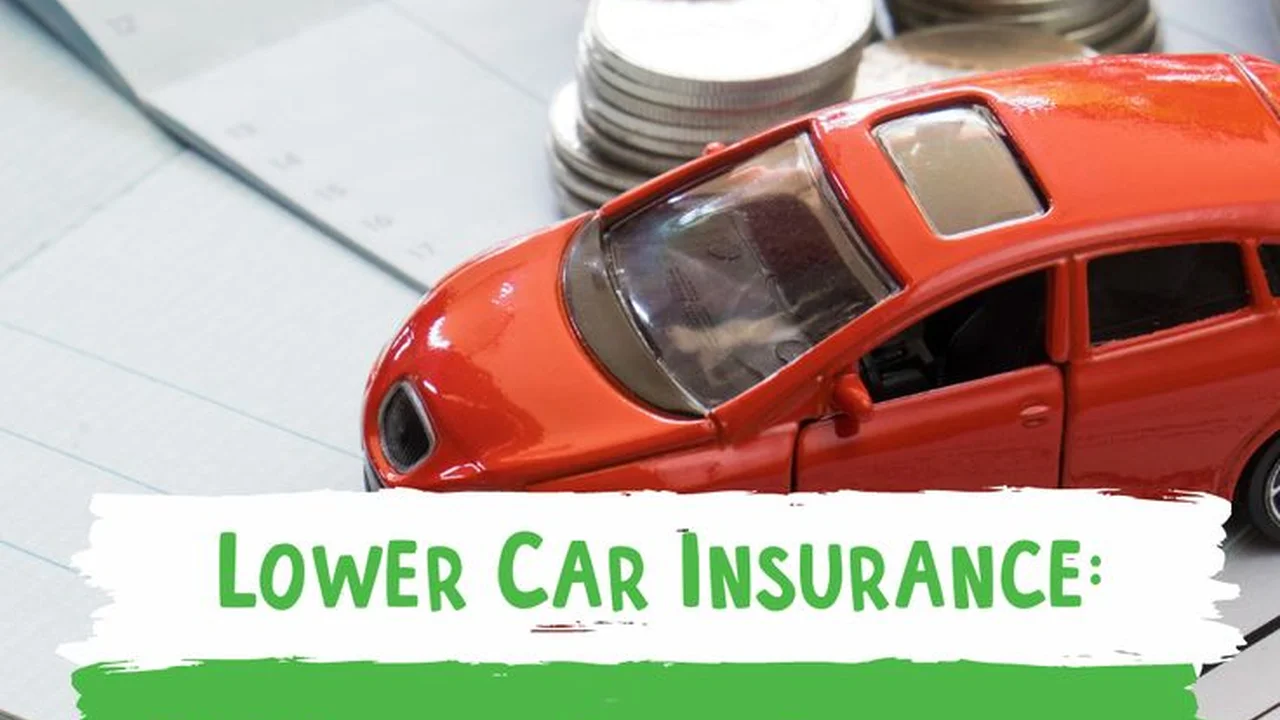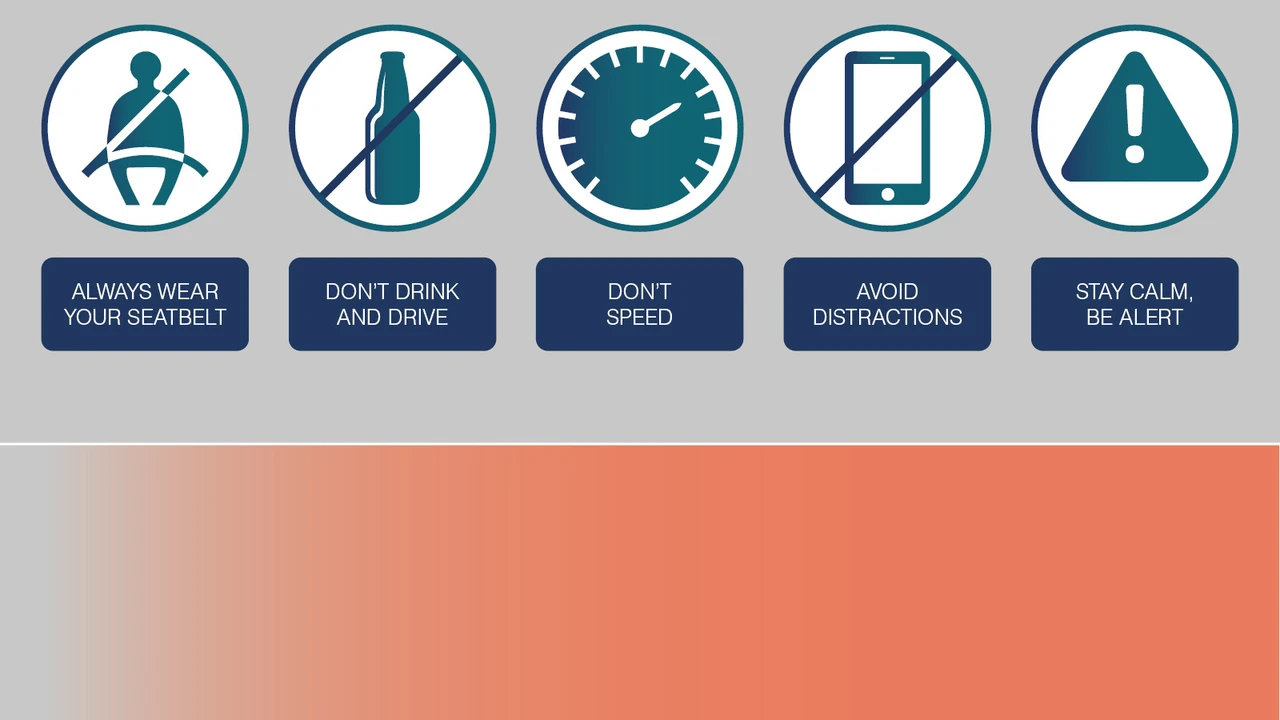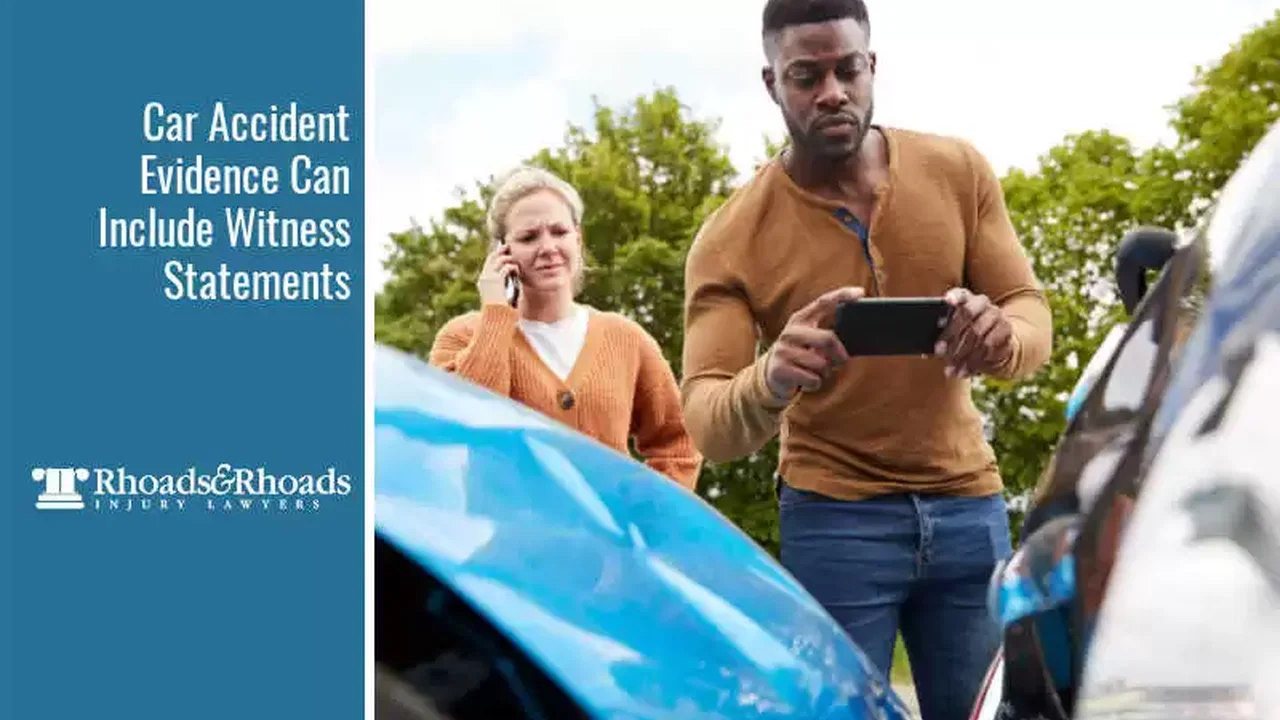How to Negotiate Lower Car Insurance Rates with Your Insurer

Understanding Your Car Insurance Policy and Coverage Options
Alright, let's be real. Car insurance can feel like a necessary evil. You're paying for something you *hope* you never have to use. But understanding what you're paying for is the first step to potentially saving some serious cash. So, grab a coffee (or tea, whatever floats your boat) and let's dive into the nitty-gritty of your policy. Think of this as your crash course (pun intended!) in car insurance lingo.
First things first: what kind of coverage do you have? Liability insurance is usually the bare minimum required by law. It covers damages to *other* people and their property if you're at fault in an accident. Think of it as protecting your assets – and preventing you from being sued into oblivion. Then there's collision coverage, which covers damage to *your* car, regardless of who's at fault. Comprehensive coverage is the all-encompassing umbrella, covering things like theft, vandalism, hail damage, and even hitting a deer (it happens!). Uninsured/Underinsured Motorist coverage protects you if you're hit by someone who doesn't have insurance or doesn't have enough to cover your damages. Finally, there's Personal Injury Protection (PIP), which covers medical expenses for you and your passengers, regardless of fault (available in some states).
Knowing the limits of your coverage is just as important as knowing *what* you're covered for. These limits are the maximum amount your insurance company will pay out in the event of a claim. Higher limits mean more protection, but they also come with a higher premium. Lower limits mean lower premiums, but you're taking on more risk. It's a balancing act, and it's important to find a sweet spot that you're comfortable with.
Improving Your Driving Record and Safe Driving Habits for Insurance Discounts
Okay, so you're probably thinking, "My driving record? That's a sore subject." But honestly, cleaning up your act behind the wheel is one of the *best* ways to score some serious insurance discounts. Insurance companies see you as a risk. The safer you drive, the lower that risk, and the lower your premiums will be.
The first and most obvious step? Stop getting tickets! Speeding tickets, running red lights, even minor infractions can add points to your license and send your insurance rates skyrocketing. Defensive driving courses are your friend here. Not only will they teach you valuable skills to avoid accidents, but many insurance companies offer discounts for completing them. It's a win-win!
Beyond avoiding tickets, practice safe driving habits. This means staying off your phone while driving (seriously, put it away!), avoiding distractions, and being aware of your surroundings. Use your turn signals, maintain a safe following distance, and obey all traffic laws. It might sound like common sense, but these simple things can make a huge difference in your safety – and your insurance rates.
Consider investing in a dashcam. They're relatively inexpensive and can provide valuable evidence in the event of an accident. Having video footage can help prove your innocence and prevent you from being held liable for damages. Plus, some insurance companies offer discounts for having a dashcam installed.
Leveraging Car Safety Features and Anti-Theft Devices for Insurance Savings
Your car's safety features aren't just there to protect you in an accident; they can also save you money on your insurance. Insurance companies love safety, and they're willing to reward you for driving a car that's equipped with the latest and greatest safety technology.
Anti-lock brakes (ABS) are a standard feature on most modern cars, but they're still worth mentioning. ABS helps prevent your wheels from locking up during hard braking, allowing you to maintain steering control and avoid skidding. Electronic Stability Control (ESC) is another important safety feature that helps prevent skidding and loss of control, especially in slippery conditions.
Airbags are a given, but the more airbags your car has, the better. Side airbags, curtain airbags, and even knee airbags can provide additional protection in the event of a collision. Lane departure warning systems alert you if you're drifting out of your lane, while blind spot monitoring systems warn you of vehicles in your blind spots. These features can help you avoid accidents altogether.
Anti-theft devices can also score you some insurance discounts. Car alarms, GPS tracking systems, and even simple steering wheel locks can deter thieves and reduce the risk of your car being stolen. The more layers of security you have, the better your chances of getting a discount.
Increasing Your Car Insurance Deductible for Lower Monthly Premiums
Your deductible is the amount you pay out-of-pocket before your insurance coverage kicks in. Increasing your deductible is a surefire way to lower your monthly premiums. The higher your deductible, the lower your premiums will be. But before you jump at the chance to save a few bucks each month, consider the risks involved.
If you choose a high deductible, you'll be responsible for paying a larger amount out-of-pocket in the event of an accident. Make sure you have enough savings to cover that deductible if something happens. Otherwise, you could be stuck with a hefty repair bill that you can't afford.
Think about your driving habits and your risk tolerance. If you're a cautious driver with a clean record, you might be comfortable with a higher deductible. If you're a more aggressive driver or live in an area with high accident rates, you might want to stick with a lower deductible.
Run some scenarios with your insurance company. Ask them how much your premiums would decrease if you increased your deductible from $500 to $1000, or from $1000 to $2000. This will give you a better idea of the potential savings and help you make an informed decision.
Bundling Your Car Insurance with Other Insurance Policies for Multi-Policy Discounts
Insurance companies love loyalty, and they're often willing to reward you for bundling multiple policies with them. Bundling simply means purchasing more than one type of insurance from the same company. The most common example is bundling your car insurance with your home insurance, but you can also bundle with renters insurance, life insurance, or even umbrella insurance.
The benefits of bundling are twofold. First, you'll typically get a discount on each policy. The exact amount of the discount will vary depending on the insurance company and the types of policies you're bundling, but it can often be significant. Second, bundling simplifies your life. You'll only have to deal with one insurance company for all your insurance needs, which can save you time and hassle.
Shop around and compare quotes from different insurance companies. Get quotes for individual policies and then get quotes for bundled policies. See which company offers the best overall value. Don't just focus on the price; also consider the coverage options and the customer service reputation of each company.
Comparing Car Insurance Quotes from Multiple Providers and Shopping Around
Never settle for the first car insurance quote you receive. Shopping around and comparing quotes from multiple providers is the single most effective way to find the best rates. Insurance companies use different formulas to calculate premiums, so the prices can vary significantly from one company to another.
There are several ways to compare car insurance quotes. You can contact insurance companies directly, either online or by phone. You can use an online comparison tool, which will allow you to get quotes from multiple companies at once. Or you can work with an independent insurance agent, who can shop around for you and find the best deals.
When comparing quotes, make sure you're comparing apples to apples. Check the coverage limits, deductibles, and other policy features to ensure that you're getting the same level of protection from each company. Also, read the fine print and understand the terms and conditions of each policy.
Taking Advantage of Car Insurance Discounts for Students, Seniors, and Military Personnel
Many insurance companies offer discounts to specific groups of people, such as students, seniors, and military personnel. These discounts are often based on the perceived lower risk associated with these groups. Students, for example, may be eligible for discounts if they maintain good grades or complete a driver's education course. Seniors may be eligible for discounts if they take a defensive driving course or have a clean driving record.
Military personnel are often eligible for significant discounts on car insurance, as a thank you for their service. Some insurance companies even offer special policies designed specifically for military members.
Don't be afraid to ask your insurance company about any potential discounts that you might be eligible for. They may not volunteer the information, so it's up to you to be proactive and inquire about it.
Negotiating Your Car Insurance Rates Directly with Your Insurer
Believe it or not, you can often negotiate your car insurance rates directly with your insurer. Insurance companies want to keep your business, and they may be willing to lower your rates if you're a good customer with a clean driving record. The key is to be polite, professional, and prepared to make your case.
Start by doing your research. Get quotes from other insurance companies and see if you can find a better deal elsewhere. Then, contact your current insurer and explain that you're considering switching to a different company because you've found a lower rate. Ask them if they're willing to match or beat the competitor's offer.
Highlight your good driving record and your loyalty to the company. If you've been a customer for many years and you've never filed a claim, make sure to mention that. Also, point out any safety features that your car has, such as anti-lock brakes, electronic stability control, and airbags.
Reviewing Your Car Insurance Policy Annually and Making Necessary Adjustments
Your car insurance needs can change over time, so it's important to review your policy annually and make any necessary adjustments. For example, if you've recently moved to a new neighborhood, changed jobs, or purchased a new car, you may need to update your policy to reflect those changes.
Also, review your coverage limits and deductibles to make sure they still meet your needs. If you've accumulated more assets, you may want to increase your liability coverage to protect yourself from lawsuits. If you're driving less, you might be able to lower your mileage and save money on your premiums.
Life changes, and your insurance should change with it. Don't just set it and forget it. Take the time to review your policy each year and make sure you're getting the best possible coverage at the best possible price.
Understanding Usage-Based Insurance Programs and Telematics Devices
Usage-based insurance (UBI) programs, also known as telematics programs, are becoming increasingly popular. These programs use devices installed in your car or smartphone apps to track your driving habits, such as speed, acceleration, braking, and mileage. The data collected is then used to calculate your insurance premiums.
If you're a safe driver, you can potentially save a significant amount of money on your insurance with a UBI program. However, if you're an aggressive driver, you could end up paying more. Before enrolling in a UBI program, make sure you understand how your driving data will be used and how it will affect your premiums.
Some popular UBI programs include Progressive's Snapshot, State Farm's Drive Safe & Save, and Allstate's Drivewise. These programs typically offer discounts for safe driving habits, such as avoiding hard braking, accelerating smoothly, and driving during off-peak hours.
Exploring Group Car Insurance Options Through Employers or Associations
Some employers and associations offer group car insurance options to their employees or members. Group insurance policies can often be cheaper than individual policies, as the risk is spread across a larger group of people.
Check with your employer or any associations you belong to see if they offer group car insurance. Even if they don't, it's worth asking them to consider offering it. Many insurance companies are willing to work with employers and associations to create customized group insurance programs.
Considering Pay-Per-Mile Car Insurance for Low-Mileage Drivers
If you don't drive much, you might want to consider pay-per-mile car insurance. With this type of insurance, you only pay for the miles you drive. Your premiums are based on a combination of a base rate and a per-mile rate.
Pay-per-mile insurance can be a great option for people who work from home, take public transportation, or only drive occasionally. However, it's not a good option for people who drive a lot, as the per-mile rate can add up quickly.
Some popular pay-per-mile insurance companies include Metromile and Mile Auto. These companies typically use devices installed in your car to track your mileage.
Maintaining a Good Credit Score for Favorable Car Insurance Rates
In many states, insurance companies use your credit score to help determine your car insurance rates. People with good credit scores are generally seen as less risky to insure, and they often qualify for lower premiums. Conversely, people with poor credit scores may pay higher premiums.
To maintain a good credit score, pay your bills on time, keep your credit card balances low, and avoid opening too many new credit accounts at once. You can also check your credit report regularly to make sure there are no errors or inaccuracies.
Reviewing Car Insurance Coverage After Major Life Events
Major life events, such as getting married, having a baby, buying a house, or starting a new job, can have a significant impact on your car insurance needs. After any major life event, it's important to review your car insurance coverage and make any necessary adjustments.
For example, if you get married, you may want to add your spouse to your car insurance policy. If you buy a house, you may want to bundle your car insurance with your home insurance. If you start a new job with a longer commute, you may need to increase your mileage on your policy.
Specific Product Recommendations, Usage Scenarios, Comparisons, and Pricing
Alright, let's get down to some specific product recommendations. Remember, prices can vary depending on your location, driving record, and other factors, so these are just estimates.
Dash Cams for Enhanced Safety and Potential Discounts
Vantrue N4 3 Channel 4K Dash Cam - Comprehensive Coverage
Usage Scenario: Ideal for rideshare drivers, families, or anyone who wants complete coverage of what's happening inside and outside their vehicle. Think of it as your personal witness on the road.
Comparison: The Vantrue N4 stands out with its three cameras (front, interior, and rear), providing a 360-degree view. Compared to single-camera dash cams, it offers more comprehensive coverage in case of an accident. Compared to dual-camera dash cams, it adds interior recording, which can be useful for rideshare drivers or for monitoring passengers.
Price: Around $250 - $300.
Garmin Dash Cam Mini 2 - Compact and Discreet
Usage Scenario: Perfect for those who want a discreet dash cam that doesn't obstruct their view. It's small enough to be hidden behind your rearview mirror.
Comparison: The Garmin Dash Cam Mini 2 is incredibly compact, making it less noticeable than larger dash cams. However, it only records the front view. Compared to more expensive dash cams, it lacks advanced features like GPS and parking mode.
Price: Around $130 - $150.
Thinkware U1000 4K UHD Dash Cam - Premium Features
Usage Scenario: For drivers who want the best possible video quality and a wide range of features, including advanced driver-assistance systems (ADAS) like lane departure warning and forward collision warning.
Comparison: The Thinkware U1000 boasts 4K UHD recording, providing incredibly sharp and detailed video. It also includes features like parking mode, GPS, and cloud connectivity. However, it's one of the more expensive dash cams on the market.
Price: Around $400 - $500.
Anti-Theft Devices for Peace of Mind and Insurance Discounts
Ravelco Anti-Theft Device - Immobilizer
Usage Scenario: For high-risk vehicles or areas with high rates of car theft. This device physically prevents the car from starting unless a specific plug is inserted.
Comparison: More effective than basic alarms, as it directly interrupts the electrical system. More expensive and requires professional installation compared to steering wheel locks.
Price: $500-$1000 installed.
Club 3000 Twin Hook Steering Wheel Lock
Usage Scenario: A visible deterrent for opportunistic thieves. Easy to install and remove.
Comparison: Less sophisticated than immobilizers but a good visual deterrent. Affordable and easy to use but can be defeated by a determined thief.
Price: $30-$50.
LoJack - GPS Tracking System
Usage Scenario: To recover a stolen vehicle quickly. Works with law enforcement to track and recover the car.
Comparison: More reliable than basic GPS trackers, as it's integrated with law enforcement. Requires professional installation and a subscription fee.
Price: $700-$1000 installed plus subscription fees.
Telematics Devices and Apps for Usage-Based Insurance
Progressive Snapshot
Usage Scenario: Monitor driving habits for potential discounts. Plugs into the OBD-II port and tracks driving behavior.
Comparison: Easy to use and install. Discounts based on safe driving habits. Potential for premium increases if driving habits are poor.
Price: Free to use with Progressive insurance.
State Farm Drive Safe & Save
Usage Scenario: Similar to Progressive Snapshot, uses a mobile app to track driving habits.
Comparison: App-based, so no device to install. Discounts based on safe driving habits. Requires smartphone access.
Price: Free to use with State Farm insurance.
Allstate Drivewise
Usage Scenario: Another app-based program that tracks driving habits for potential discounts.
Comparison: Similar to State Farm Drive Safe & Save, with app-based tracking. Offers points for safe driving that can be redeemed for rewards.
Price: Free to use with Allstate insurance.
:max_bytes(150000):strip_icc()/277019-baked-pork-chops-with-cream-of-mushroom-soup-DDMFS-beauty-4x3-BG-7505-5762b731cf30447d9cbbbbbf387beafa.jpg)






